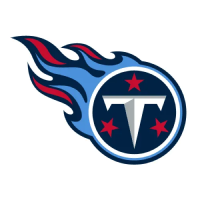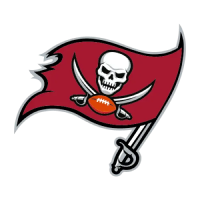The Kansas City Chiefs were the fastest team in the NFL in 2019.
I’m pleased to report that this is a fact. We’ve got GPS chips in shoulder pads and nerds in front of computers and we now know, for certain, that the Chiefs were the fastest team in the NFL in 2019. And why wouldn’t they be? With a quarterback like Patrick Mahomes able to hit any receiver at any time from any distance, the Chiefs prioritized speed to stretch defenses to their limits. Put your three best defensive backs in a race against Tyreek Hill and Mecole Hardman and Sammy Watkins, and we’ll see who wins across a four-quarter contest. That simple idea, along with a few more complex ones, carried the Chiefs all the way to a Super Bowl.
To the victor goes the spoils, and goes the attention of the rest of the league. The infatuation with speed has only grown with the advanced tracking provided by the NFL and consumed by growing analytics departments, as they look to better quantify and prioritize the trait that Al Davis called the one thing that couldn’t be taught on the football field, the gift from God. The NFL has long coveted speed, and now, they’re just getting better at finding it and using it.
But if they’re better at finding it and better at using it, should it still cost as much as it does?
Before we talk about the cost of speed at wide receiver, we have to know what exactly it is—and already, we’ve reached a tipping point of subjective measuring. Take Washington wide receiver Terry McLaurin, for example. McLaurin was one of seven wide receivers to run a sub 4.40s 40-yard dash at the 2019 NFL Scouting Combine, blazing to a 4.35s mark that put him in the 90th percentile for all wide receivers in the Mockdraftable database. That is unquestionably fast—but McLaurin wasn’t viewed as a “speed receiver.”
That had a little to do with what else McLaurin was good at. Of the four scouts who evaluated McLaurin for The Draft Network, three listed “route running” as his best trait, and when describing his NFL projection, speed was mentioned alongside releases, route running, and football intelligence as the reasons he’d be successful in the NFL. McLaurin was more than just a speed receiver.
We can compare that full, healthy profile to that of McLaurin’s teammate, Parris Campbell. Rumored up to Indianapolis as a 4.2s prospect, Campbell was known for his speed far more than McLaurin was—in part because he was faster (he ran a 4.31s 40-yard dash), and in part because he didn’t have much else in his profile beyond his speed. All three of our scouts who evaluated Campbell detailed his speed and burst as his best traits, but remarked that he wasn’t used as a vertical threat at all, had significant warts in his route running, and was likely to be a subpackage player who received schemed touches in the NFL—unlike McLaurin, who could be a three-level threat. It was McLaurin at Ohio State who actually saw the vertical routes and deep targets, and Campbell who ran the underneath crossers and jet sweeps. In the Urban Meyer offense with quarterback Dwayne Haskins at the helm, that made Campbell the more valuable, high-volume player.
Knowing what we know now makes a look back at the 2019 draft a lot easier—and with Campbell’s injuries at Indianapolis, he is catching the short end of the stick in this comparison. But Campbell was selected in the second round by the Indianapolis Colts, who have since added another early-drafted wide receiver in Michael Pittman—McLaurin was selected in the third round by Washington, was an immediate qualifier for the All-Rookie team, and is one of the best young wide receivers in the NFL.
The only thing Campbell had on McLaurin was a few hundredths of a second in the 40-yard dash, a few inches in the broad and vertical jumps, and some better production in college. And it spelled nearly a round of difference.
While we don’t always have two speedy receivers from the same team in a draft class, this is not a one-off. In the past two drafts, the top wide receiver off the board has been a player known for their elite speed: Henry Ruggs at No. 12 overall in 2020, and Marquise Brown at No. 25 overall in 2019. Later in 2019, the league would draft Mecole Hardman (4.33s 40-yard dash), Campbell, and Andy Isabella (4.31s 40-yard dash) all in the second round before getting to players like McLaurin, Diontae Johnson, and even D.K. Metcalf, a speed receiver (4.33s 40-yard dash) who doesn’t look like one (228 pounds).
Back further and we see early drafted players like John Ross (4.22s 40-yard dash, ninth overall, 2017), Will Fuller (4.32s 40-yard dash, No. 21 overall, 2016), Breshad Perriman (4.31s 40-yard dash, No. 26 overall, 2015), and Phillip Dorsett (4.33s 40-yard dash, No. 29 overall, 2015). Good prospects, have dealt with some injury, and generally failed to achieve at the NFL level.
When you compare those early-drafted speed threats to some of the later-drafted players is where things get really interesting. Dorsett went two rounds before a player of a similar height/weight speed profile in Tyler Lockett, with Lockett the lesser in the 40-yard dash by only seven-hundredths of a second. Dorsett was valued because of his explosive vertical plays at Miami—Lockett did much the same at Kansas State, but also had the route running and release game to succeed off the line of scrimmage, and produced more for the Wildcats accordingly. Through the NFL, that has held much the same.
Marquise Brown was nicknamed Hollywood at Oklahoma for his highlight-play potential every time he touched the football—but recently, he hasn’t touched the football much at all. Brown has only seen 17 targets in his last four games (4.25/game) after averaging seven targets/game through the first six weeks of the season—and on top of that, he’s dropping 11% of the balls that come his way. Meant to be a vertical threat in the Ravens’ play-action heavy passing game, Brown has only caught 25% of his deep targets this year, which accounts for over 35% percent of his looks altogether. Compare those numbers with those of D.K. Metcalf if you want to be unfair: with the size, catch radius, and play strength that Brown lacks, Metcalf is seeing deep targets on 27% of his opportunities and catching 50% of them. Or you could compare Brown instead to Jalen Guyton, a North Texas 2019 UDFA who didn’t even make the Combine invite list. A 4.39s 40-yard dash player at 212 pounds, Guyton isn’t as fast as Brown is—but this year, he’s been more effective (40% catch rate) on a similar heavy skew of vertical routes (44%) for the Chargers.
When receivers are drafted early, they aren’t just drafted for big plays—but when they’re drafted for their speed, the expectation is indeed that they create explosives. Those can be on vertical routes, or they can be on yards after the catch—this is the Parris Campbell argument, the hunt for the playmaking factor. But again, early-drafted speed wide receivers don’t hold up relative to their later-drafted counterparts. Mike Renner of PFF showed that college broken tackle rate nicely predicts busts against hits for early-drafted receivers; Austin Gayle showed that receivers with a dense frame, like A.J. Brown (4.49s 40-yard dash) and Deebo Samuel (4.48s 40-yard dash) were the true top producers in YAC over expectation. While players like Brown and Samuel had more modest 40-yard dash times, they still had strong Speed Scores: 40-yard dashes at their heavier weights.
There is an argument to be made that, while some of these early-drafted speed wideouts aren’t making plays, they still are making plays—just plays that aren’t showing up in their personal stat sheets. Like NBA sharpshooters and their gravity, putting fast players on the field affects defenses. We see sub 4.4s 40-yard dash players at the top of NFL Next Gen Stats’ cushion measurement, which details just how much space off the line of scrimmage receivers are given by the cornerback opposite them. Famously, Deshaun Watson’s splits with speed wide receiver Will Fuller detail that Fuller is bringing a ton of value to the Houston offense, even if that value isn’t fully captured in his performance.
https://twitter.com/KevinColePFF/status/1210189518491414528
But if the threat of speed is valuable, and late-round speedsters are doing just as much in actual production as early-round speedsters, we do have to wonder if the NFL has been overdrafting speed. The very allure of the high-flying passing attack that we detailed above can become a honey trap if speed is considered a rare trait or a vaunted one, to be prioritized over all other abilities of wide receiver play. The best speed receivers we’ve seen enter the league over the last few years—Tyreek Hill, D.K. Metcalf, Terry McLaurin—remain players who have skills beyond just straight-line speed; just as the best vertical receivers we’ve seen remain players with a wide variety of skill sets: speed, releases, contested catches, and ball-tracking.
It’s a muddy conversation because we’re positive that speed matters and we’re positive that other stuff matters too. In the game of personnel evaluation and acquisition, we’re stuck trying to balance a multifarious seesaw, with arms as fluid and many as an octopus. But the price for elite speed has seemingly become too steep, just as the best draft picks of recent years seem to be those fast, but not blazing fast receivers who came in respectably behind their track star contemporaries. As always in the NFL, the margins are razor-thin and the edges are tough to exploit. But the honey trap of early-draft speed receivers is one to avoid moving forward.
The injury aspect is an important part of this conversation. The league would love a way to predict injury, and would especially implement that data—whether analytic or heuristic—into their draft approach. If you knew a prospect was more likely to get injured in his rookie contract than another prospect, you could lower him on your board, and he would never end up on your team at all. Unfortunately, nothing neat and tidy exists for predicting injury, and that which is available doesn’t give us much evidence against smaller, speedier wideouts. Zach Binney for Football Outsiders found that, while wide receivers are injured more often than any position besides RB and DB, a lighter (and presumably faster) wide receiver was less likely to be injured than a heavier (and presumably slower) wide receiver.
With these early-drafted speed receivers then, we can struggle to capture their true value.
Filed In
Related Articles
NFL Draft
Arik Gilbert Doesn’t Need Big Workload To Be A Top NFL Draft Pick
- Aug 22, 2022
NFL Draft
2023 NFL Mock Draft: Marino 1.0
- Aug 22, 2022
Written By


































